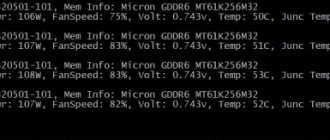Hedge fund
Today's investment sphere is replete with tools for generating income for every taste. Unfortunately, not all of them are equally accessible to different categories of investors. This is especially true for highly profitable types of alternative investments.
First of all, we are talking about hedge funds, which allow passive income to be received only by those who can overcome the minimum limit on the volume of invested funds, often measured in millions of dollars.
What are hedge funds, who most often uses their services, how a high percentage of profitability is achieved and why they are almost non-existent on the domestic market - you can learn about all this and more as you read this article.
- What is a hedge fund
- How does a hedge fund work?
- Classification of hedge funds
- How to create a hedge fund
- Hedge funds in Russia
- The largest hedge funds in the world
What are hedge funds
In general terms, hedge funds (hereinafter referred to as HF) are commercial financial organizations that invest clients' money using special methods of insuring investment transactions or hedging in financial and other types of markets.
Note. Hedging (from the English hedge) is a fence, protection, including from any dangers or troubles.
Hedging risks in financial markets involves the use of certain types of financial instruments, such as futures, options, arbitrage transactions, including minimizing client capital risks through the use of offshore jurisdictions.
Hurry up to take advantage of the doubling of the tax deduction until December 31, 2022.
The main features of hedge funds, in contrast to other types of work with money from third-party investors (i.e. under a trust management agreement - DM), are as follows:
- Hedge funds are usually not specific to any country, legal or governmental jurisdiction. Those. They have an international character in their management structure and work with clients. In some ways they are similar to TNCs (transnational companies). This lack of a single jurisdiction allows hedge funds to flexibly formulate their investment policies, invest clients’ money in assets of different countries, apply tax optimization schemes, take advantage of the peculiarities of tax legislation in a particular country, benefits, etc.
Legal jurisdiction in the global hedge fund industry.
- HFs, unlike traditional types of collective investment in the asset market (mutual funds, non-state pension funds, etc.), do not have strict regulation of their financial activities or methods of limiting risks. This creates the opportunity for these financial corporations to invest investors’ money where it is most profitable, and not guided by the instructions of some Central Bank or officials. Even if it is fraught with risk.
- Hedge funds use the most advanced and innovative technologies in the financial and information spheres in their investment practice. This allows them to be orders of magnitude more efficient than traditional financial institutions. By the way, it was the HF that was one of the first to invest in projects to create algorithmic computer systems (and the Internet, in particular) in order to increase the speed of information processing when making their financial decisions.
Now in the world there are more than 15 thousand hedge funds of various capitalizations and styles of working with clients. There are funds that work with the general public of private or corporate investors. And there are so-called funds of funds.
These are, in fact, elite investment clubs that invest the capital of wealthy clients of a certain social circle, special family funds.
The most well-known representatives of the pure hedge fund class are corporations such as Quantum (founder - famous philanthropist and investor George Soros), Medallion, BlackRock, Rothschild family funds, etc.
When and how did they arise
The appearance of the first hedge funds occurred in the post-war years, at the turn of the 50s. last century, when for the first time wheat futures contracts began to be sold on the Chicago Mercantile Exchange in America. Subsequently - for all types of exchange goods, from oil to cotton and cocoa beans.
With the help of these futures contracts, any seller or buyer could insure their transaction in case the purchase or sale price of an asset did not meet their expectations. Gradually, the practice of using futures appeared in securities trading to protect investors' investment portfolios from sharp fluctuations in market conditions and stock exchange prices.
The first officially registered HF appeared in the USA in early 1950. Its founder was the then famous American stock speculator Alfred Johnson.
The immediate reasons for its emergence were the introduction into practice of investment methods with insurance of securities portfolios using derivative financial instruments. This has found application in almost all global financial markets.
Share of hedge funds in the global investment market. In addition, factors such as:
- Strict tax regulation by America's financial authorities applied to financial corporations. Suffice it to say that American tax legislation, introduced during the era of US President Roosevelt, provided for a tax rate for the rich of up to 90% of income received. This situation has forced many investment funds, whose clients are precisely these wealthy people, to use offshore jurisdictions to minimize such “draconian” tax measures.
- For 50–60 years. The last century was the time of the so-called baby boom, when the post-war generation of Americans began to create families en masse. To ensure a carefree future for their children, these families invested their savings in numerous investment and pension funds. But these PFs were subject to strict regulation by financial authorities. They could invest clients' money only in a limited list of highly reliable, but, unfortunately, low-yield securities. First of all, these were American government treasury bonds or Treasuries. Accordingly, HFs could offer such families greater returns at a relatively low level of risk.
- The emergence of the first computer trading platforms and digital communications systems in the late 1980s and early 1990s allowed hedge funds to implement a host of methods and technologies that could neutralize almost any financial or market risk. This period is considered the beginning of a boom in hedge funds around the world.
- The introduction of a large class of securities into the market (such as mortgages and other securitized financial instruments) has also contributed to increased demand for hedge fund services. They were not limited in any way in choosing the most exotic financial instruments for their investment strategies. In total, the HF uses about 1,200 financial assets and instruments.
The emergence of modern digital financial payment systems and electronic trading on exchange markets has allowed HF to apply various strategies.
They are able to solve any problem of effectively investing client funds in securities, precious metals, antiques, real estate or real business, as well as in new types of investment assets, including cryptocurrency hedge funds (alternative investments).
How they work
Expert opinion
Vladimir Silchenko
Private investor, stock market expert and author of the Capitalist blog
Ask a Question
Although hedge funds are powerful financial corporations that manage billions of dollars in client assets, the way they operate is simple.
Let me explain with an example.
A block of shares in Sberbank, purchased with the expectation that they will grow. To hedge the risk of loss of value, either a futures contract or, better yet, an option is purchased.
Even if the price of Sberbank's shareholding decreases against our expectations, the investor still has the opportunity to sell them at the price fixed in the option contract. The only thing the investor will have to pay for is the cost of the contract itself, which rarely exceeds 1-2% of the transaction amount.
This scheme of insuring a transaction—one type of product or asset with the help of another product or contract—is the basic operating principle of all financial institutions.
True, for this, hedge funds can use not only 1,200 financial instruments, but also preferential tax offshore jurisdictions, banking services in different countries (for example, arbitration of interest rates on loans), as well as wide diversification of investment portfolios, which include not only securities , but also real assets.
The main differences between hedge funds and mutual funds
They have some similarities with mutual funds - they work with money from third-party clients, collective investments.
But there are a number of fundamental differences:
- HFs do not have a clear legal form. These can be investment companies, funds, venture enterprises, and even public organizations, such as interest clubs. Mutual funds, according to Russian laws, must have a management company not lower than the status of an LLC or CJSC.
- For its investment strategy, a hedge fund can choose almost any financial instrument or asset that is included in the fund’s investment memorandum. Mutual funds are limited in the choice of assets, both by reliability class and type. These restrictions are established by regulatory government bodies, the Central Bank of the Russian Federation, which issues each mutual fund an appropriate license.
Preference for choosing an investment format among wealthy clients.
- In mutual funds, the profit of each investor is determined based on his share in the authorized capital of the fund, i.e. share size. Hedge funds use a version of a certificate certifying the right to profit from all of the fund's profits. This certificate can be sold, inherited, or used as collateral.
- In mutual funds, investors can only accept the conditions for investing capital that are offered. Hedge funds allow investors to choose where they want to invest their money.
Peculiarities of work of Russian hedge funds
The main feature and at the same time a significant limitation of the work of HFs in Russia is that they have the right to attract money from Russian investors and depositors only if they have state registration in the country.
Besides:
- There are restrictions in terms of licensing and the choice of investment instruments.
- Most hedge funds in Russia are focused exclusively on working with large corporate or wealthy private clients. In this case, the practice is to place part of the investors’ capital in the offshore accounts of their subsidiaries.
- Those HFs that are aimed at retail, small investors, as a rule, have an entry threshold of at least 100 thousand rubles. This significantly limits the demand for the products of such investment companies from the majority of the population.
- The commissions charged by Russian hedge fund managers are no lower than 15–20% of the amount of invested capital, which is several times higher than commission rates in developed countries.
It should also be added here that most of the financial activities of the HF in Russia are closed, since the bulk of the investors’ capital works through the schemes of subsidiary management companies located in offshore jurisdictions.
Strategies
Most hedge funds do not adhere to a specific strategy, but operate assets based on the market situation. However, here are some of the most popular strategies.
- Long and short positions in the stock market. What it is? Let's try to explain the principle of operation of this hedge fund strategy in simple words.
Long transactions are those in which an investor buys an asset in the expectation that it will increase in price after a certain time. For example, shares have fallen sharply in price due to a decrease in tourist flows. But we all know that this phenomenon is temporary. Accordingly, it makes sense to purchase airline securities at a time when they are cheap, so that later, perhaps a year or more later, they can be sold at a higher price.
As for short positions, such transactions are carried out with instruments that have just begun to fall in price, and all forecasts indicate that the fall will continue. Then the investor purchases assets at his own expense or using leverage (borrowed funds) and quickly sells them in order to soon buy them again at an even lower price. This combination of short and long positions allows you to diversify risks. A hedge fund operates with a ratio of long-term and short-term positions in accordance with the market situation of a specific country or group of countries.
- Market-neutral strategy or arbitrage. In essence, this strategy is a variation of the one described above. The difference is that arbitrage can be used in cases where the value of assets differs across different stock exchanges. Thus, the manager opens a long position on one exchange and a short position on another, distributing funds in a 50/50 ratio. This reduces the risk to a minimum.
Net exposure is calculated as the difference between the shares of funds expressed as a percentage (in our case 50-50 = 0%). Gross exposure, on the other hand, is defined as the sum of these shares (50+50=100%). If a trader decides to increase the share of long positions to 60% using a leverage of 10%, then the gross risk increases by the amount of leverage and will be 110%.
- Macroeconomic strategies. Hedge funds sometimes analyze the impact of macroeconomic trends on certain asset categories. To make it clear, let's give an example with oil prices. When oil prices rise, oil exporting countries make a profit, while importers make a loss. Accordingly, on the stock exchanges of importers, shares of oil companies take long positions, because commodity prices are very sensitive to the political situation. In addition, the price cannot rise indefinitely, otherwise supply will fall - buyers will begin to look for alternatives and quotes will go down. Then, on the exchanges of exporting countries, it makes sense to open short positions on the securities of oil companies.
- Relative value arbitrage. The trader selects a pair of securities that are related to each other. These could be shares and bonds of a company or securities of companies in one sector of the economy. Two transactions are carried out simultaneously:
- purchasing an asset that is expected to increase in value;
- opening a short position on an asset with a predicted drop in value.
How much profit do they get?
Hedge funds, especially those that work with wealthy clients (family foundations, trusts), are fairly closed organizations. Even through research into their financial statements, it is difficult to find the ultimate beneficiary of the investment.
This also applies to the issue of profit. According to experts, on average, the HF is able to exceed the risk-free rate of return or bank loan interest set by the Central Bank by a multiple. For the USA and Western European countries this is 2-3%, for Russia - 7-8%.
Accordingly, American ones have a profit of no less than 10–12% per annum. Those. their returns are comparable to the SP500 stock index. Russian ones have a profit of at least 20–30% per annum, since they have to factor country risks into their investment strategy. Those. risks of doing business in a specific territory.
Hedge Fund Incentive Fees
In addition to the main payment in the form of a share of the profit received by the fund for the reporting period, investors receive incentive payments or bonuses:
- options to purchase a share or certificate of participation in the HF at a preferential price;
- if the amount of the investment portfolio exceeds a given threshold, the asset manager’s commission is reduced;
- preferential services from lawyers when executing investment transactions, including distribution of shares among the final beneficiaries of an investment project or portfolio;
- preferential lending rate to fund investors through its partner banks.
History of origin
It is generally accepted that the founder of hedge funds is Alfred Winslow Jones, who was fond of trading on the stock exchange. A. Jones was a sociologist by profession and collaborated with Fortune. One of his articles in 1949 was based on a study of certain patterns: while some assets on the stock market rise in price, others lose value. At the same time, A. Jones came up with the idea to try this on personal experience. He began to buy shares that were currently considered undervalued on the market, but had potential for growth. At the same time, Jones sold securities that were overvalued from his point of view, i.e. those stocks that should soon fall in price.
Having developed a decent experience of making a profit on both growth and decline in stock prices, A. Jones founded his own fund, AWJones & Co., the profit of which was more than 300% for the period from 1960 to 1965.
Jones' strategy has been adopted by other investment funds in the US and UK. It is in these countries that the largest number of hedge funds are concentrated. Some of them operate directly on the territory of these states, other funds operate in offshore zones (Cayman Islands, Grenada, British Virgin Islands, etc.).
Kinds
In practice, the following types of hedge funds are found:
- Funds of funds. Managers of a network of various funds, each of which has its own specialization. The management company only coordinates the overall strategy and manages the redistribution of financial flows. The closest analogy is corporate holding structures.
- Neutral strategy funds. Applying a loss limitation strategy regardless of market conditions. They work in the real estate market when implementing development projects. This is due to the fact that it is necessary to ensure a stable financial flow, regardless of the current demand for residential or commercial real estate.
- Funds that work using current events tactics or, more simply put, enter market assets for which any important economic or political events are expected. For example, buying up company shares in anticipation of a Fed rate cut or introducing a bill to tighten the work of foreign investors in the IT sector of Russia.
- Funds that use a strategy of investing in stocks while simultaneously hedging the portfolio with various instruments.
An offer for every taste
The hedge fund industry has changed rapidly in recent decades, and today the primary mechanism used to allocate funds to an asset or asset class is derivatives—futures and forwards—plus options and swaps. In this case, the underlying asset can be any asset class, market, industry in any geographic location in the world. According to Andrey Arzhanukhin, director of the capital markets department at Accent Capital, a variety of strategies can be implemented through derivatives, including various types of arbitrage, trading based on signals, selling insurance against various types of risks, and so on. “The concept of hedge funds now covers an unlimited range of funds that use the maximum possible tools to achieve target risk/return,” notes Andrey Arzhanukhin.
According to Ruthenium Fund managing partner Maxim Popov, the most popular are four groups of hedge fund strategies: equity hedge, event driven, global macro, relative value. The first group includes various types of equity strategies that involve active hedging, short selling and the use of derivatives. The second group allows you to make money on corporate events related to the M&A activity of companies, restructuring, bankruptcies, buy backs, and so on. The third group includes strategies in which the investment object is indices, highly liquid instruments, currencies, and interest rates. At the same time, fund managers make money on anomalies that are not taken into account by the market. The last group includes strategies that make money on various types of arbitrage. “Arbitrage can be between the cost of one share traded on different exchanges, between implied and realized volatility, and so on,” explains Mr. Popov.
Structure and management
At the very beginning of their appearance, all HFs had a classic multi-level vertical structure and management model. However, now most have a network structure, with many branches, representative offices, subsidiaries, law firms, brokers, and consulting agencies in several countries around the world.
However, each hedge fund has a certain set of functional management bodies in its structure:
Typical hedge fund structure diagrams.
Typical hedge fund structure diagrams.
- The governing body is usually the board of directors of the management company. Often such management companies are registered offshore, and management is entrusted to a nominal general director. All real powers for capital management are vested in the board of directors (BoD), each with its own voting rights, corresponding to the size of the share in the authorized capital.
- Client bank or custodian bank. This bank performs the functions of accepting investors’ money, then transferring it to the accounts of Management Company HF.
- Broker. Its main function is to carry out all operations through it on financial markets, exchanges, trades, auctions and competitions. Often large financial holdings have their own brokerage companies that provide direct access to exchange trading platforms.
- A consulting or lawyer company (division) is necessary for legally competent support of all investment transactions and work with clients.
As for the fund itself, it usually takes the form of a limited liability company LTD or, in the Russian version, LLC. The investor’s initial pool of money is accumulated in his accounts, which are then transferred to the management company’s management company.
The structure may also have its own board of directors, where the functions of directors can be performed by the same persons as on the board of directors of the management company of the fund. Sometimes a scheme of cross exchange of directors is used between the fund's board of directors and the management company's board of directors.
Operating procedure
How do hedge funds work? A typical structure of its environment looks like this.
Investors are the source of funds.
The Board of Directors is the link between investors and managers. Supervises the activities of management companies and companies providing services, resolves controversial issues, and determines personnel policies.
Management company (MC) - attracts investors, determines investment strategies, and provides general management. The Criminal Code includes:
- managing partners;
- analysts - the quality of predictive models for the development of the economic and political situation depends on them;
- traders are the “core” of the fund; the profitability of investors depends on the level of these people.
Administrator - conducts an independent assessment of the value of net assets (risk minimization), in some cases prepares accounting and external reporting for investors, pays bills, deals with issues of profit distribution, subscription and redemption of shares.
Primary broker - provides operational support and technical support for transactions in national and foreign markets. Provides a range of financial services (clearing, depository, etc.). It must ensure the most complete coverage of the markets where the management company operates, so a large bank (Merrill Lynch, Goldman Sachs, Morgan Stanley) often acts as a primary broker.
Guarantor bank - ensures the integrity of deposits, generates reports on transactions on the account, and in some cases verifies the activities of the management company. In most cases, a large bank with an unshakable reputation.
External auditor - checks the reporting for its reliability and compliance with accounting and legal standards. An auditor is a guarantor of reputation, which, given the volume of investments, is of paramount importance. Therefore, they try not to skimp on it and attract well-known companies from the TOP 10.
Legal consultant (internal or external) - ensures obtaining a license, manages all issues of concluding contracts in different jurisdictions.
The structure considered allows for numerous variations in the direction of simplification or complexity.
Taxation of hedge funds
Hedge funds are taxed in the same way as other financial companies and corporations at income tax rates with a starting value of 24%. However, this figure is supplemented by taxes paid on income received in the form of stock dividends. In general, if we take all taxes, then HFs are required to pay at least 50–60% of all their profits in Russia.
But HFs would not be hedge funds if they did not use legal schemes and methods of tax optimization. Including by fixing part (most) of the profits in the offshore accounts of their subsidiaries. In offshore companies, the profit from operations in the financial markets for financial firms rarely amounts to more than 10% of the total profit for the reporting period.
US Hedge Fund Interest Rates
The interest income of the average capital fund in America ranges from 15 to 40%.
It should be taken into account that the scale of capital operated only by large funds in the United States amounts to more than 1.6 trillion. dollars. This is not counting the money of investors who, through HF, “hid” their capital in numerous “gray” offshore jurisdictions.
How hedge funds achieve better margins
In order to have a return higher than that of most classic investment funds or a bank deposit, MFs use not only risk insurance methods or tax planning, but also an increase in their marginal income.
For this purpose:
- methods related to margin trading of securities, currencies, precious metals, and commodities with so-called leverage. It can reach values of 1:100 and higher;
- purchase of undervalued or junk assets, securities with a rating below investment grade (below BBB on the rating scale);
- buying up operating companies and businesses that are experiencing certain difficulties. They are offered the option of restructuring, a friendly takeover, a loan in exchange for a share in the authorized capital;
- application of arbitrage transaction schemes, arbitrage of interest rates on loans, including carry trade.
HFs use high-frequency or algorithmic trading in their investment strategy; they use artificial intelligence, neural network platforms, and digital cryptographic communications to analyze BIG DATA.
Risks for the faint of heart
When choosing a fund, investors should carefully study not only the strategy, but also the financial instruments they are buying. If the instruments included in the fund have low liquidity and increased volatility, then investors should be aware of all the risks associated with such investments. At the same time, the main risk is the failure to receive the level of income that the investor expected, as in any other financial instrument. In July, the world's best managers of such funds recorded losses against the background of growing indices of developed countries. The HFRI 500 Hedge Fund Indices, which tracks the 500 largest hedge funds, fell 0.4%. At the same time, the S&P 500 index rose 2.44%. “Strategies that engage in hedging have a right to exist and a place in a diversified portfolio, but you need to understand that the vast majority of such portfolios over the years will lag in profitability from simply long-only strategies and portfolios, especially taking into account high commissions,”— notes Investment Director of Otkritie Management Company Vitaly Isakov.
How to become a member of a hedge fund
To become an investor or participant in a hedge fund, you must meet the basic conditions:
- Have sufficient entry capital, since most HFs have an entry price threshold in Russia of 100 thousand rubles and above. In the States, such an entry threshold amounts to hundreds of thousands and even millions of dollars.
- Have legal confirmation of your income, that it was obtained honestly, and all taxes have been paid on it.
- Provide identification documents, passport, bank statements, confirmation of real address of residence.
- Read and sign the investment memorandum. This can be done both in the office and through its website.
- Fill out an application to join the fund. The more serious the HF, the longer this application will be considered. It is quite possible that there will be a need to meet with management or a representative will come to talk with the investor in person.
As soon as all formalities are completed, the investor transfers his money to the bank accounts - the fund's custodian - and waits for that happy day when he will become much richer thanks to the care of the HF managers.
Where is it profitable to invest?
The most promising areas of investment from the perspective of investment policy and the prospects of the global and Russian economy are:
- investments in securities (stocks and bonds) related to high technology, the production of organic food, medical equipment and equipment, in companies engaged in biotechnology, as well as alternative energy sources;
- investments in assets related to innovative financial technologies “fintech”. These are, first of all, blockchain technologies, cryptocurrency payment systems, cryptographic user interfaces;
- investments in intellectual products - copyrights, works of art, including paintings, antiques, wine collections;
- investments related to the development of applied scientific research. First of all, this concerns space research and flights, unmanned transport, robotization of technological processes, “Internet things”, the “smart home” concept, artificial intelligence, computer neural networks, life extension - “anti-aging”, etc.
Adage Capital Partners
Adage Capital Partners is a huge fund with over $27 billion in assets under management. The fund uses a long/short strategy and has returned 9.39% CAGR over the past 3 years.
Adage has a unique commission structure that benefits investors. Instead of a traditional fund taking 20% of investors' returns, Adage Capital Partners takes only 20% of returns above a benchmark such as the Standard and Poor's 500 index.
How to create your own hedge fund from scratch
You can answer with a long list of instructions on how to open a hedge fund in Russia; it will take more than one hour of reading. It's easier to say what you need for this (in sequential order):
- Establishment of a legal entity. In Russia, this must be a company not lower than LLC status. In foreign practice LLC or Co.Ltd.
- Licensing. To obtain licensing in Russia, you will need to have an appropriate investment memorandum and the amount of authorized capital not lower than the standards of the Central Bank of the Russian Federation. So that the general director of the management company, executive director, and key specialists have qualification certificates of professional financial managers or consultants. They are issued by the Federal Service for Supervision of Financial Markets of the Central Bank of the Russian Federation. It doesn't come cheap. Suffice it to say that completing the training and passing the exams will take 2 months and cost at least 50 thousand rubles per person.
- Conclude an agreement with the custodian bank and broker. All these partners will require their share of the remuneration, which will not be less than 5% of the investment capital.
- The authorized capital for a HF may be within the minimum threshold, i.e. at 10,000 rubles. But it is worth remembering that investors demand from the company reliability and guarantees of compensation for their losses. So the minimum authorized capital for financial organizations attracting money from third-party investors must be at least 30 million rubles.
- Once everything is in place, the next step is to attract customers. Expenses for primary advertising, work with key investors. HF promotion may take from 6 months to 1 year.
If there is a desire to set up a financial holding in an offshore jurisdiction, then organizationally everything is simpler. In principle, you can buy a ready-made turnkey company. This will cost at least 10-15 thousand dollars.
The main costs of opening and maintaining a hedge fund in an offshore jurisdiction:
But to work with reputable clients, you will have to invest at least $1 million in order to have certain financial guarantees to partners in the form of banks, consultants, lawyers and audit firms.
The costs for them will be at least 50% of all costs. For clarity, all the basic figures for opening a business enterprise in offshore companies are shown in Table 2.
Stratus (9 Percent Target Vol)
The Stratus fund (9 Percent Target Vol) posted a remarkable three-year average return of 12.47%. Stratus, managed by Paris-based Capital Management, is a quantitative fund that utilizes the firm's proprietary "alpha" strategies, including directional volatility, day trading, statistical equity arbitrage and statistical volatility arbitrage trading strategies. The fund is the smallest on the top 10 list, but still manages more than $5 billion in assets.










